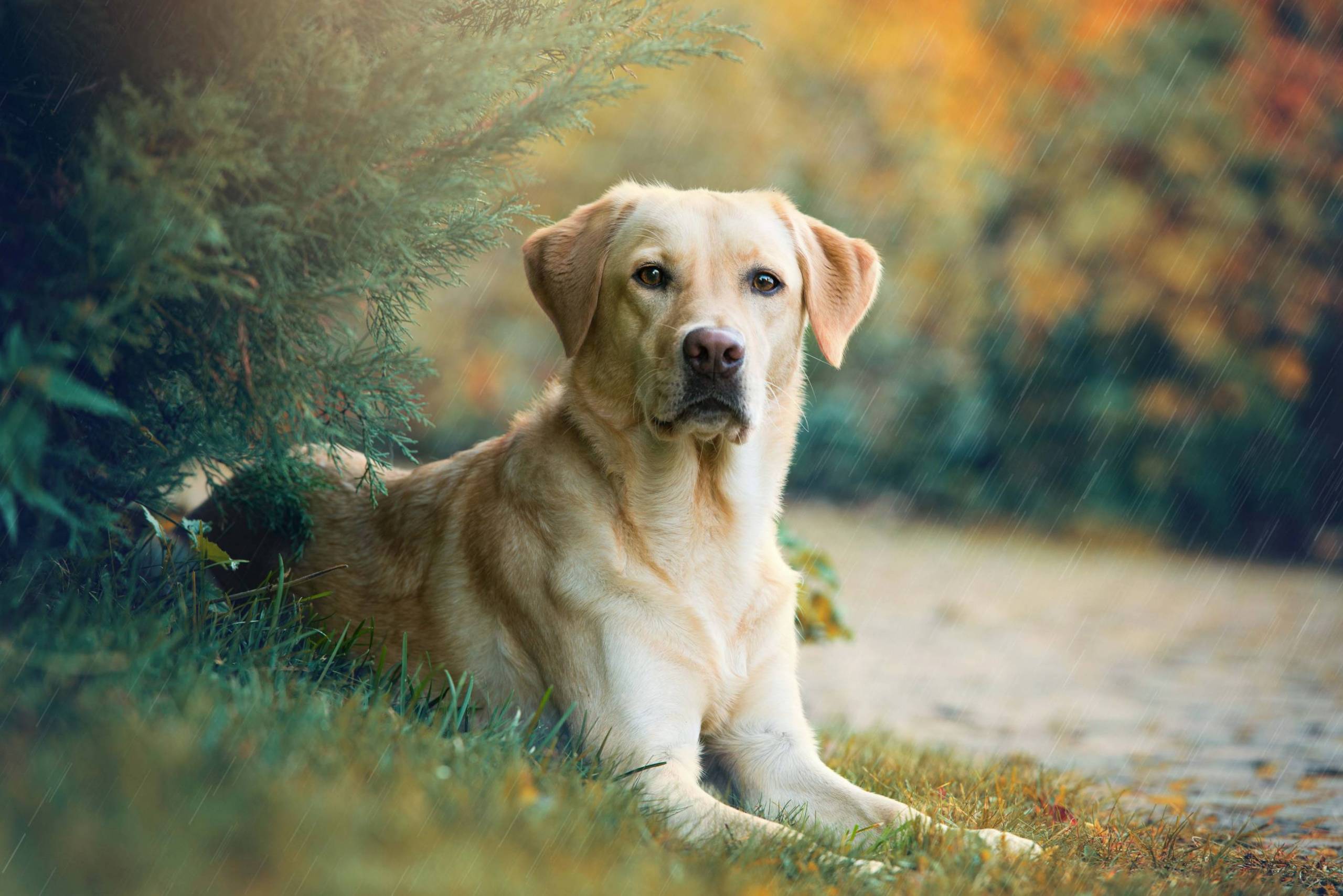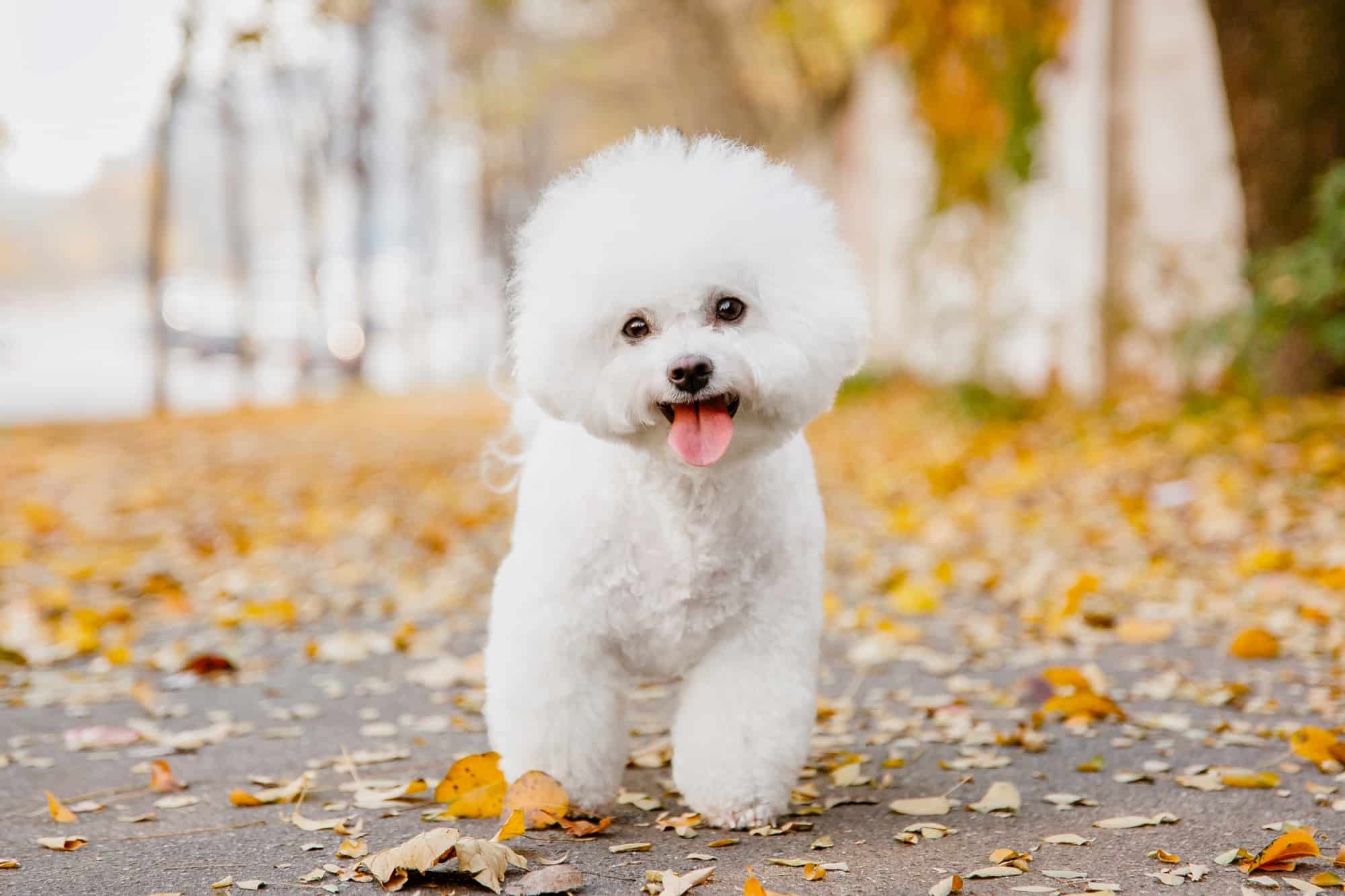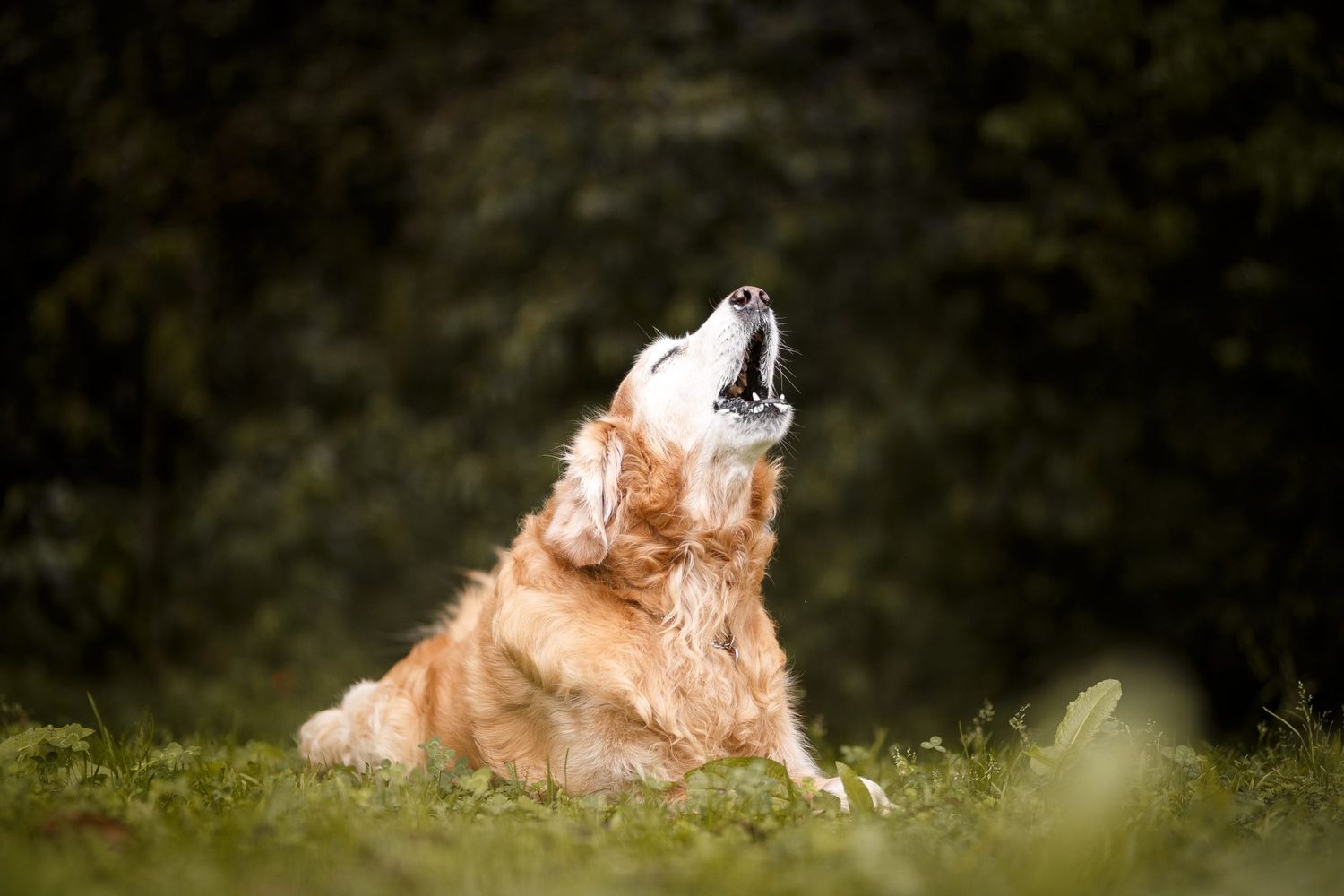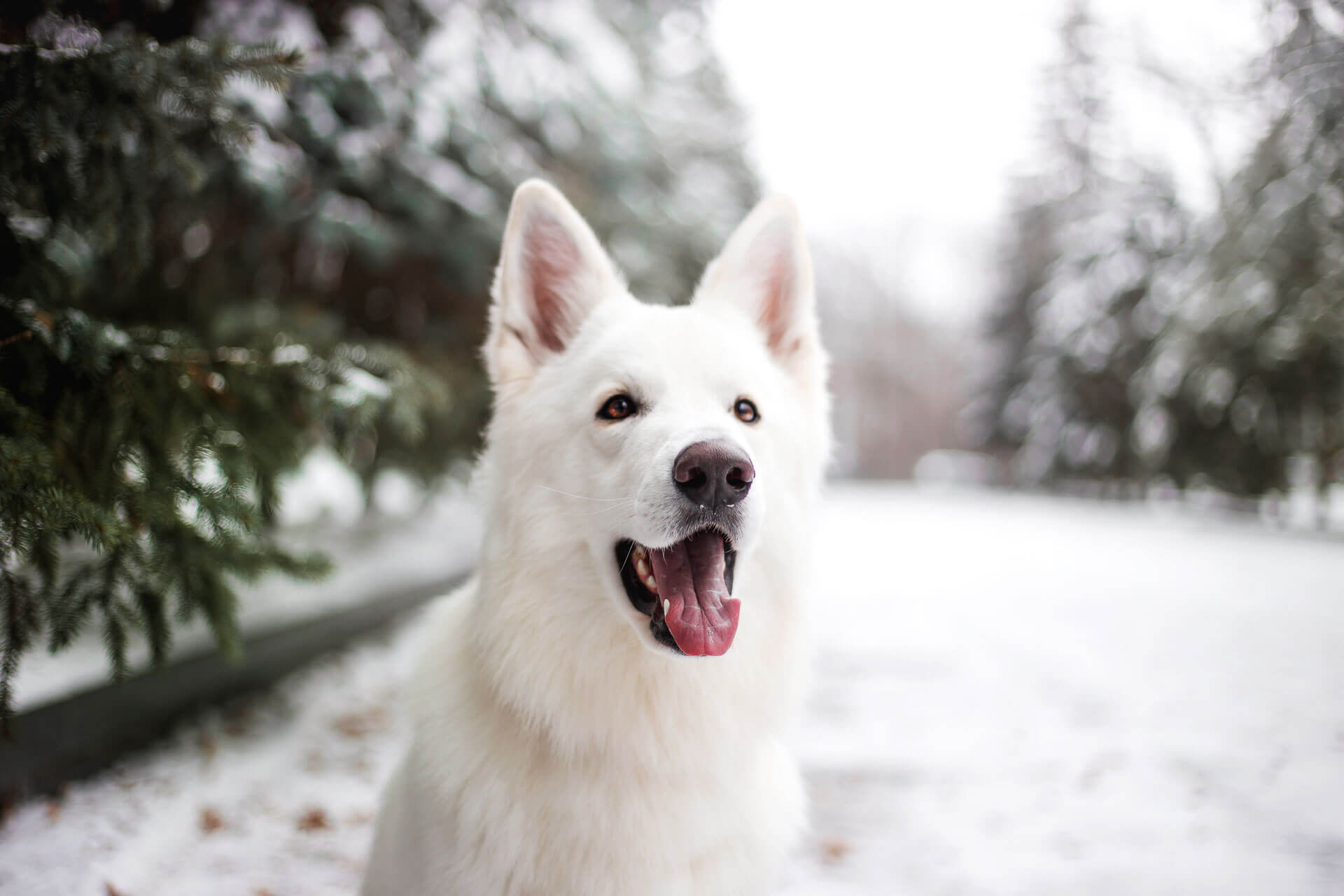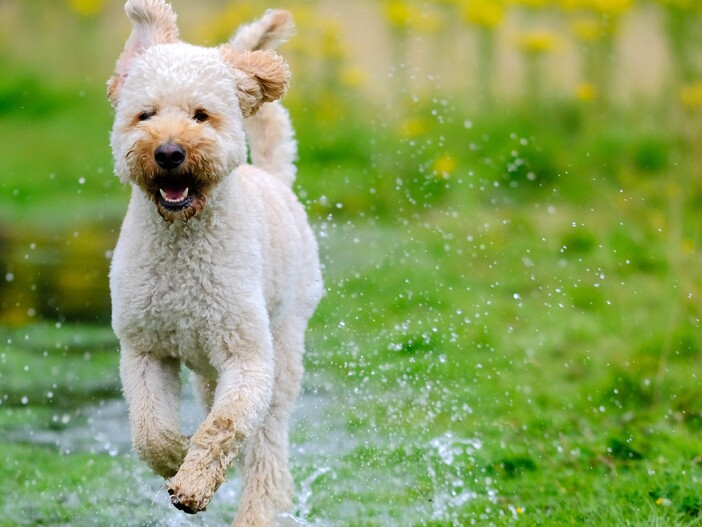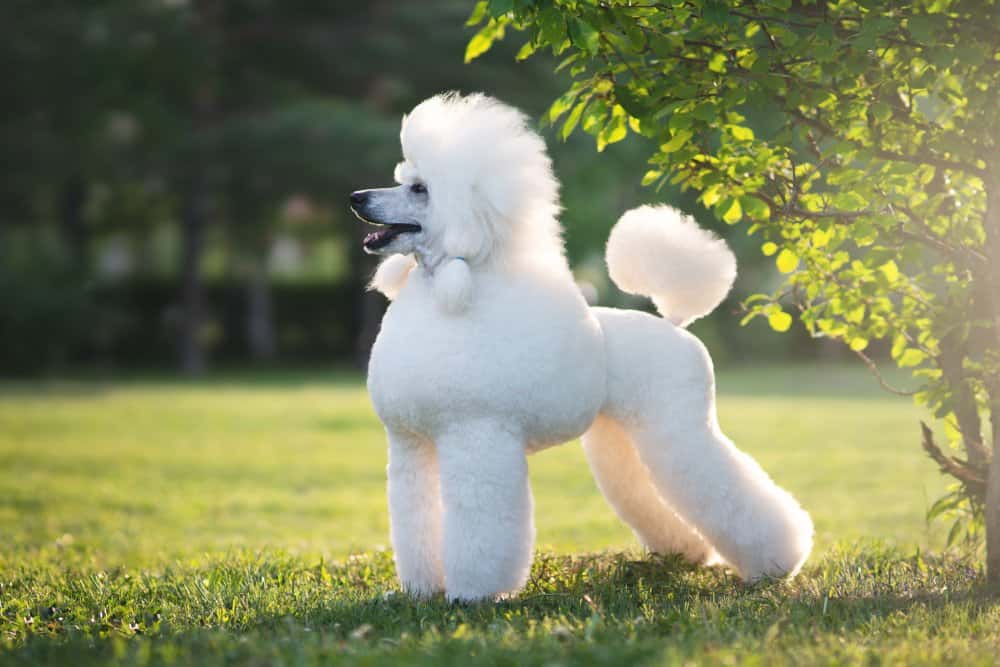Spitz dog breeds are a group of northern dogs that are characterized by their dense double coats, wolflike pointed ears, and curled tails. They were bred to live in cold climates and originated in Scandinavia, Russia, North America, and Asia.
The word “spitz” in German means “pointed.” Physically, most spitz breeds have a wolf-like appearance that includes pointy, pricked ears, almond-shaped eyes, a heavy, double coat, and a feathery tail carried over the back. Spitz breeds are often loyal, intelligent, and affectionate, but they can also be independent and bold.
You are reading: 12 Best Types Of Spitz Dog Breeds
Not always suited to the novice owner, these active dogs have working backgrounds, and their tasks ranged from helping with hunting and herding to pulling sleds. In this article, we will discuss 12 of the best types of Spitz dog breeds, their characteristics, and what to expect from them.
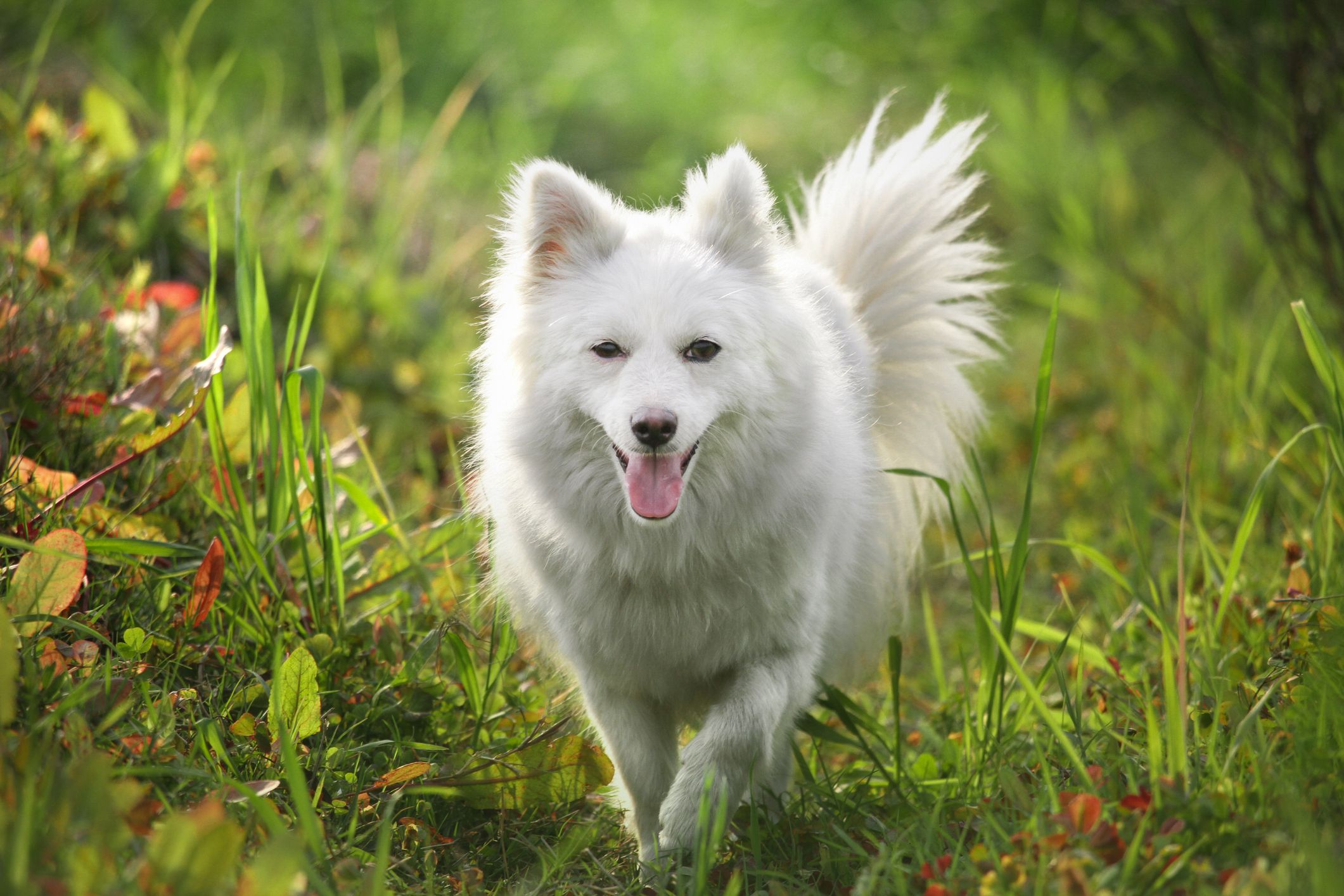
12 Best Types Of Spitz Dog Breeds
Alaskan Malamute
The Alaskan Malamute is a large, powerful dog breed that originated in Alaska. These dogs are known for their strength, endurance, and loyalty. They have a thick double coat that provides insulation against freezing temperatures and comes in various colors, including shades of gray, black, white, and copper.
Alaskan Malamutes were initially bred to pull heavy sleds over extended distances, and they assisted in hauling supplies and transportation tasks. This breed has a strong work ethic, making regular exercise and mental stimulation vital to their well-being.
Neglecting these needs can lead to a mischievous Malamute, so engaging activities and frequent outdoor adventures are imperative. Alaskan Malamutes are loyal, intelligent, and playful dogs, but they can also be independent and bold. They are not always suited to novice owners, as they can be challenging to train and live with.
Without sufficient exercise and challenging things to do, Malamutes become rambunctious and bored, which they usually express by chronic howling and destructive chewing. Potential aggression toward other animals is a real concern, so early socialization is essential.
American Eskimo Dog
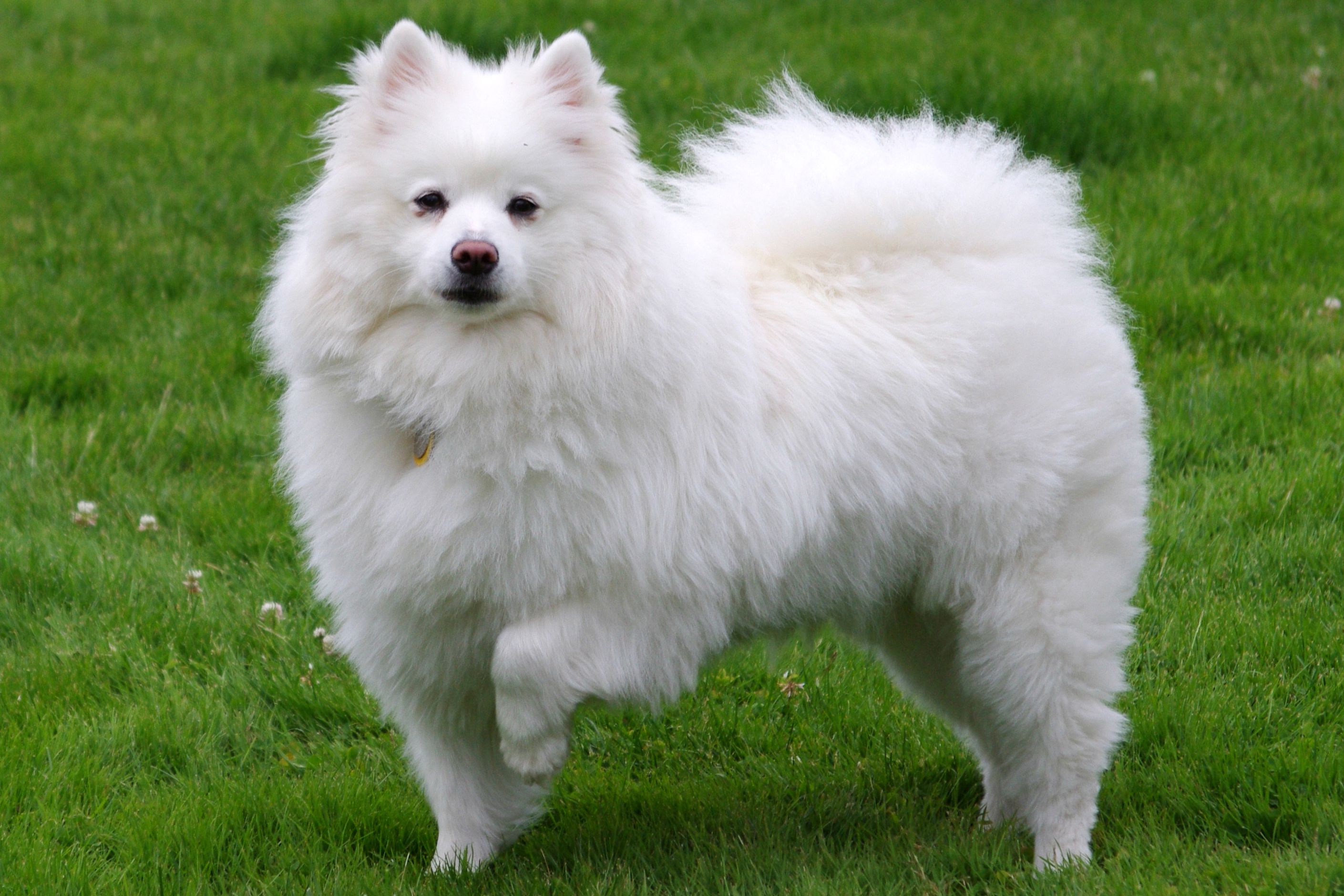
The American Eskimo Dog, also known as the Eskie, is a small to medium-sized Nordic-type dog breed that looks like a miniature Samoyed. They are known for their striking white coat, sweet expression, and black eyes.
Eskies are lively, active companion dogs who love to entertain and join in on all family activities. They are outgoing and friendly with family and friends, but reserved with strangers.
Eskies are highly intelligent, easily trainable, and excel in obedience and agility activities. They are affectionate, loving dogs that are excellent with children. However, they can be stubborn and prone to excessive barking, making early socialization and training essential.
Eskies are capable of amazing escapes if not properly confined, so it is important to keep them in a secure area. The American Eskimo Dog comes in three sizes: toy, miniature, and standard, and they range in weight from 6 to 35 pounds.
Chow Chow
The Chow Chow is a breed of dog that originated in China and is known for its lion-like appearance and distinctive blue-black tongue. This breed is square in profile, with a broad skull and small, triangular, erect ears with rounded tips. The
Chow Chow has a very dense double coat that is either smooth or rough and comes in various colors, including red, black, blue, cinnamon, and cream. They have a distinctive scowl-like expression, which adds to their regal appearance. Chow
Chows are independent, loyal, and aloof dogs that are devoted and protective of their family. They are not usually social, outgoing dogs and tend to be cautious around strangers. Early socialization and training are crucial to prevent aggression towards other dogs and strangers.
Read more : Why Is My Dog Suddenly Sleeping Under The Bed?
Chow Chows are highly intelligent and quick learners, but they can be challenging to train due to their strong-willed nature. They have a low-maintenance personality that means they can often demand little in the way of attention or affection.
However, they can be quite aloof at times. The Chow Chow is a large breed that weighs between 45-70 pounds and has a lifespan of 10-15 years.
Finnish Lapphund
The Finnish Lapphund is a medium-sized breed of Spitz type that originated in Finland. Traditionally, they were used for herding reindeer, and they are still used for this purpose today.
The Finnish Lapphund is a hardy, easy-going breed that is known for its agility and alertness. They have a thick, medium-length coat that comes in various colors and markings, and it provides insulation that allows them to excel in the harsh, cold climates of Finland.
Finnish Lapphunds are friendly, sociable, and intelligent dogs that are highly affectionate and devoted to their family. They are naturally submissive with people and great with children.
Finnish Lapphunds are agile and capable of quick bursts of speed, making them excellent herding dogs. They have triangular, upright ears and oval-shaped eyes, which sometimes feature markings around them that are referred to as “spectacles”.
Finnish Lapphunds are medium-sized dogs, with males averaging 18-21 inches tall and females ranging from 16-19 inches, and they weigh between 33-53 pounds.
Icelandic Sheepdog
The Icelandic Sheepdog is a breed of dog that originated in Iceland and is of Nordic Spitz type. Here are some facts about the Icelandic Sheepdog:
– The Icelandic Sheepdog is Iceland’s only native dog breed, and it is as old as the nation itself.
– The breed derives from dogs brought to Iceland by Viking settlers in the ninth century, and it is both similar and closely related to the Buhund of Norway and the Vallhund of Sweden, which derive from the same ancestral stock.
– The Icelandic Sheepdog is one of very few breeds of dog for which claims of ancient origin are demonstrably supported by both archaeological and written evidence.
– Icelandic Sheepdogs are lively, intelligent, and eager to please, making them generally easy to train.
– They don’t respond well to harsh corrections or training methods.
– Icelandic Sheepdogs are affectionate, friendly, and gentle dogs that make great family pets.
– They are known for their thick, double coat that comes in various colors, including black, white, and tan.
– Icelandic Sheepdogs are medium-sized dogs, with males averaging 12-16 inches tall and females ranging from 10-14 inches, and they weigh between 20-30 pounds.
– The breed’s “spitziness” is expressed by a dense coat, curled tail, and prick ears.
– Icelandic Sheepdogs were traditionally used for herding both sheep and horses.
Overall, the Icelandic Sheepdog is a friendly, intelligent, and loyal breed that makes a great family pet. They are easy to train, but they require gentle methods and plenty of positive reinforcement. Their thick coat requires regular grooming, and they need plenty of exercise to stay healthy and happy.
Japanese Spitz
The Japanese Spitz is a small to medium-sized breed of dog that originated in Japan in the 1920s and 1930s by breeding a number of other Spitz-type dog breeds together. They are recognized by the vast majority of the major kennel clubs, except the American Kennel Club, due to their similar appearance to the white Pomeranian, American Eskimo Dog, and Samoyed.
Japanese Spitz dogs are intelligent, easy to train, and great with children. They are playful, smart, and comedic companions who are steadfastly loyal and almost always smiling.
Japanese Spitzes have their own lineages and hail from Japan. They are protective of their human families and known to bark when strangers enter their territory without backing down.
Japanese Spitz dogs are low-maintenance and have fairly low grooming needs, despite the appearance of their gorgeous, white fur. They make good apartment dogs, so long as pet parents meet their exercise needs. Overall, the Japanese Spitz is a friendly, intelligent, and loyal breed that makes a great family pet.
Keeshond
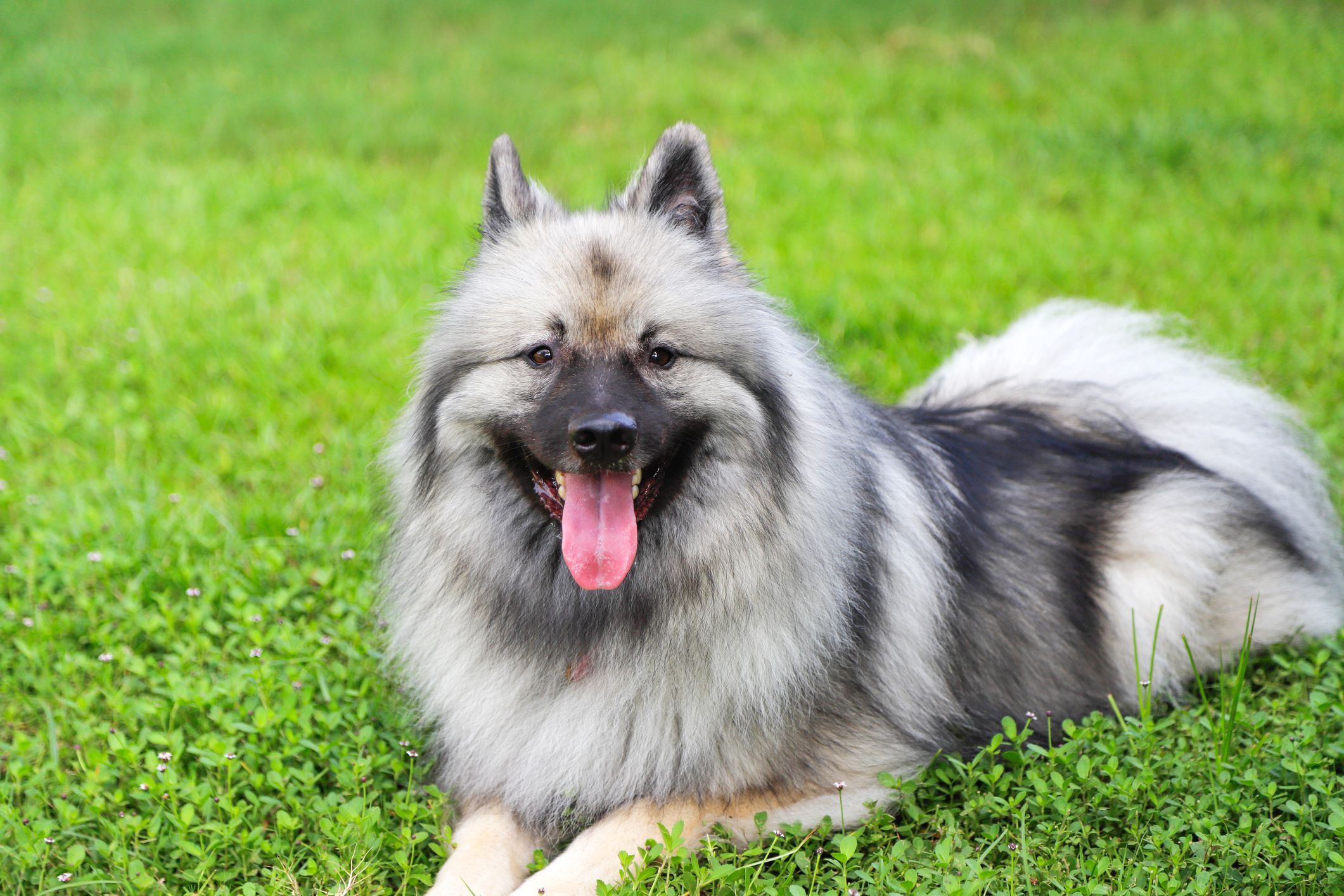
The Keeshond is a medium-sized dog breed that originated in the Netherlands. Here are some facts about the Keeshond:
Appearance:
– The Keeshond has a plush, two-layer coat of silver and black fur with a ruff and a curled tail.
– They have a distinctive “spectacles” on their foxy face.
– The breed is descended from ancient Arctic dogs, and their closest relatives are the German spitzes.
History:
– The Keeshond was previously known as the Dutch Barge Dog, as it was frequently seen on barges traveling the canals and rivers of the Netherlands.
– The Keeshond was the symbol of the Patriot faction in the Netherlands during political unrest in the years immediately preceding the French Revolution.
– In the late 19th century, the breed was developed in England from imports obtained in both the Netherlands and Germany.
Temperament:
– Keeshonds are people-lovers and thrive with people who expect this of their dog.
– They are lively, alert, and intelligent dogs that are willing to participate in all family activities.
– Keeshonds are adaptable and can make good apartment pets, but they have a tendency to bark, which neighbors might not appreciate.
– They are affectionate and attached to their people, but they can be reserved with strangers.
Health:
– Keeshonds are generally healthy dogs, but they can be prone to certain health issues, including hip dysplasia, patellar luxation, and progressive retinal atrophy.
Overall, the Keeshond is a friendly, intelligent, and loyal breed that makes a great family pet. They are adaptable and can thrive in various living situations, but they require plenty of exercise and mental stimulation to stay healthy and happy.
Norwegian Buhund
The Norwegian Buhund is a breed of dog of the Spitz type that originated in Norway. Here are some facts about the Norwegian Buhund:
Appearance:
– The Norwegian Buhund is a medium-sized dog, with males standing 17 to 18.5 inches at the shoulder and weighing 31 to 40 pounds, and females standing 16 to 17.5 inches at the shoulder and weighing 26 to 40 pounds.
– They have a thick, double coat that comes in various shades of wheaten, ranging from pale cream to bright orange.
– The breed has erect ears, a full and curled tail, and a wedge-shaped head.
History:
– The Norwegian Buhund is closely related to the Icelandic Sheepdog and the Jämthund.
– In Norway, Norwegian Buhunds are still used as general farm and herding dogs.
– The breed was recognized by the American Kennel Club in 2009.
Temperament:
– The Norwegian Buhund is a friendly, affectionate, and naturally gentle breed that enjoys any activity with the family.
– They are intelligent, alert, and energetic dogs that require plenty of exercise and mental stimulation to stay healthy and happy.
– Norwegian Buhunds are known for their loyalty and devotion to their family, but they can be reserved with strangers.
Health:
– Norwegian Buhunds are generally healthy dogs, but they can be prone to certain health issues, including hip dysplasia, progressive retinal atrophy, and cataracts.
Read more : Why Does My Dog Lick My Cat?
Overall, the Norwegian Buhund is a friendly, intelligent, and loyal breed that makes a great family pet. They are adaptable and can thrive in various living situations, but they require plenty of exercise and mental stimulation to stay healthy and happy.
Norwegian Elkhound
The Norwegian Elkhound is a breed of dog that originated in Norway and is one of the Northern Spitz-type breeds. Here are some facts about the Norwegian Elkhound:
Appearance:
– The Norwegian Elkhound has a thick, double coat that comes in various shades of wheaten, ranging from pale cream to bright orange.
– They have erect ears, a full and curled tail, and a wedge-shaped head.
– The breed is square-proportioned, close-coupled, and has substantial bone.
History:
– The Norwegian Elkhound has served as a hunter, guardian, herder, and defender.
– The breed is known for its courage in tracking and hunting elk and other large game, such as bears or wolves.
– The Norwegian Elkhound was first presented at a dog exhibition in Norway in 1877.
– The AKC breed name “Norwegian Elkhound” is mistranslated from its original Norwegian name Norsk elghund, meaning “Norwegian moose dog”.
Temperament:
– Norwegian Elkhounds are friendly, affectionate, and naturally gentle dogs that enjoy any activity with the family.
– They are intelligent, alert, and energetic dogs that require plenty of exercise and mental stimulation to stay healthy and happy.
– Norwegian Elkhounds are known for their loyalty and devotion to their family, but they can be reserved with strangers.
– They make excellent watchdogs and guardians.
Health:
– Norwegian Elkhounds are generally healthy dogs, but they can be prone to certain health issues, including hip dysplasia, progressive retinal atrophy, and cataracts.
Overall, the Norwegian Elkhound is a friendly, intelligent, and loyal breed that makes a great family pet. They are adaptable and can thrive in various living situations, but they require plenty of exercise and mental stimulation to stay healthy and happy.
Pomeranian
The Pomeranian is a breed of dog of the Spitz type that is named for the Pomerania region in north-west Poland and north-east Germany in Central Europe. Here are some facts about the Pomeranian:
Appearance:
– The Pomeranian is a small dog breed that typically weighs between 3 and 7 pounds.
– They have a thick, double coat that comes in various colors, including black, white, cream, orange, and sable.
– The breed has a fox-like face, erect ears, and a plumed tail.
History:
– The Pomeranian is descended from larger Spitz-type dogs, specifically the German Spitz.
– The breed has been made popular by a number of royal owners since the 18th century, including Queen Victoria, who owned a particularly small Pomeranian.
– During Queen Victoria’s lifetime alone, the size of the breed decreased by half.
Temperament:
– Pomeranians are generally perky, friendly, and outgoing dogs that love to be the center of attention.
– They are highly intelligent and trainable, but they can be stubborn at times.
– Pomeranians are known for their playful and curious nature, but they can be sensitive and require gentle handling.
– They make excellent watchdogs and are protective of their family.
Health:
– Pomeranians are generally healthy dogs, but they can be prone to certain health issues, including luxating patella, tracheal collapse, and dental problems.
Overall, the Pomeranian is a small, friendly, and intelligent breed that makes a great companion pet. They are adaptable and can thrive in various living situations, but they require plenty of exercise and mental stimulation to stay healthy and happy. Their small size and fragile build require careful handling and supervision, especially around children and larger animals.
Samoyed
The Samoyed is a breed of medium-sized herding dogs with thick, white, double-layer coats. They are spitz-type dogs which take their name from the Samoyedic peoples of Siberia. Here are some facts about the Samoyed:
Appearance:
– The Samoyed has a thick, white, double-layer coat that is naturally dirt-repellent.
– They have erect ears, a full and curled tail, and a wedge-shaped head.
– The breed is square-proportioned, close-coupled, and has substantial bone.
History:
– The Samoyed is descended from the Nenets Herding Laika, a reindeer herding spitz commonly used throughout northern Siberia.
– The breed was developed by the Samoyedic peoples of Siberia, who used them for herding, hunting, protection, and sled-pulling.
– Samoyeds were brought to England in the late 1800s, where they became popular with the royal family.
Temperament:
– Samoyeds are friendly, personable, and intelligent dogs that thrive on human companionship.
– They are independent and can be stubborn at times, but they are generally easy to train.
– Samoyeds are known for their playful and curious nature, but they can be sensitive and require gentle handling.
– They make excellent watchdogs and are protective of their family.
Health:
– Samoyeds are generally healthy dogs, but they can be prone to certain health issues, including hip dysplasia, progressive retinal atrophy, and diabetes.
Overall, the Samoyed is a friendly, intelligent, and loyal breed that makes a great family pet. They are adaptable and can thrive in various living situations, but they require plenty of exercise and mental stimulation to stay healthy and happy.
Their thick coat requires regular grooming, and they need plenty of socialization to prevent shyness or aggression towards strangers.
Shiba Inu
The Shiba Inu is a breed of hunting dog from Japan that is small-to-medium in size, and it is the smallest of the six original breeds of dogs native to Japan. The breed’s name literally translates to “brushwood dog,” as it was originally used to flush game. Here are some more facts about the Shiba Inu:
Appearance:
– The Shiba Inu is a small, alert, and agile dog that copes very well with mountainous terrain and hiking trails.
– The breed looks similar to other Japanese dog breeds such as the Akita Inu or Hokkaido, but the Shiba Inu is a different breed with a distinct bloodline, temperament, and smaller size than other Japanese dog breeds.
– The Shiba Inu’s frame is compact with well-developed muscles, and they have a thick, double coat that is short and even on the fox-like face, ears, and legs.
– The breed’s coat comes in various colors, including black and tan, cream, red, and red sesame.
History:
– The Shiba Inu is an ancient Japanese breed that dates back to at least the 3rd century BC.
– The breed nearly went extinct in the early 20th century, but was saved by a group of Japanese breeders who dedicated themselves to preserving them.
– Today, the Shiba Inu is mainly used as a companion dog in Japan and the United States.
Temperament:
– Shiba Inus are independent, intelligent, and curious dogs that can be stubborn at times.
– They are known for their playful and curious nature, but they can be sensitive and require gentle handling.
– Shiba Inus are loyal and devoted to their family, but they can be reserved with strangers.
– They make excellent watchdogs and are protective of their family.
Health:
– Shiba Inus are generally healthy dogs, but they can be prone to certain health issues, including hip dysplasia, patellar luxation, and eye problems.
Overall, the Shiba Inu is a friendly, intelligent, and loyal breed that makes a great family pet. They are adaptable and can thrive in various living situations, but they require plenty of exercise and mental stimulation to stay healthy and happy.
Their thick coat requires regular grooming, and they need plenty of socialization to prevent shyness or aggression towards strangers.
FAQS
1. What is a Spitz dog breed?
Spitz dog breeds are a group of dogs that share similar physical characteristics, including a thick double coat, pointed ears, and a curled tail. They were originally bred to live in cold climates and were used for hunting, herding, and guarding.
2. What are some common Spitz dog breeds?
Some common Spitz dog breeds include the Akita, Alaskan Malamute, Chow Chow, Finnish Lapphund, Finnish Spitz, Icelandic Sheepdog, Japanese Spitz, Keeshond, Norwegian Buhund, Norwegian Elkhound, Pomeranian, Samoyed, Shiba Inu, and Siberian Husky.
3. Are Spitz dog breeds good family pets?
Yes, many Spitz dog breeds make great family pets. They are loyal, affectionate, and protective of their families. However, they can be stubborn and require early socialization and training.
4. Do Spitz dog breeds shed a lot?
Yes, most Spitz dog breeds have thick double coats that shed heavily, especially during shedding season. Regular grooming is necessary to keep their coats healthy and prevent matting.
5. Are Spitz dog breeds good with children?
Yes, many Spitz dog breeds are good with children. However, they can be sensitive and require gentle handling. Early socialization and training are important to ensure that they get along well with children and other pets.
6. Do Spitz dog breeds require a lot of exercise?
Yes, most Spitz dog breeds are active and require plenty of exercise and mental stimulation to stay healthy and happy. They enjoy activities such as hiking, running, and playing fetch.
Source: https://petstutorial.com
Category: DOGS


